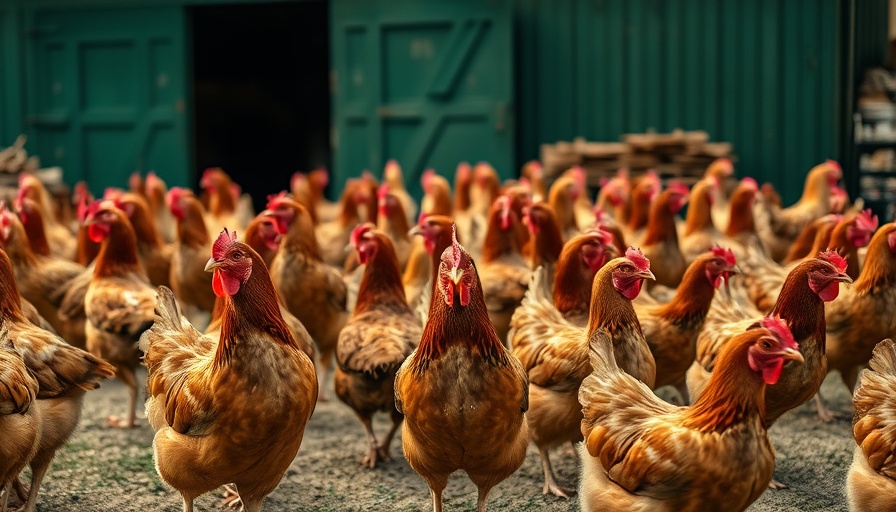
Relief for Suffolk Farmers as Bird Flu Alert Ends
In a recent development, a poultry farm near Woodbridge, Suffolk, received the all-clear following a bird flu alert that saw significant precautionary measures taken last week. The Department for Environment, Food & Rural Affairs (DEFRA) had initially imposed a control zone to mitigate potential risks of avian influenza after early signs indicated a troubling rise in mortality rates among the birds. After comprehensive testing conducted over the weekend, officials announced that the concerns regarding notifiable avian influenza were unfounded.
The Importance of Rapid Response
The swift actions taken by DEFRA, including the pre-emptive culling of birds based on observed clinical signs, underscore the importance of a rapid response in controlling outbreaks. Such measures are crucial not only for safeguarding animal health but also for protecting public health and the local farming economy. Thankfully, the follow-up testing at the avian influenza national reference laboratory confirmed that culling would no longer be necessary, allowing the revocation of the 3km and 10km control zones that had been established.
Context of Bird Flu in the Region
This incident is part of a wider pattern observed in the UK, where avian influenza outbreaks have prompted extensive biosecurity measures across the poultry industry. Suffolk has been particularly vigilant since the regional prevention zone was declared in December 2024, reflecting heightened awareness and proactive measures to reduce disease spread. The lifting of these restrictions demonstrates that effective monitoring and responsive action can successfully contain potential threats.
What’s Next for Local Farmers?
Local farmers can breathe a sigh of relief, but it is essential for them to remain vigilant. Continuing to implement strict biosecurity protocols and monitor their flocks for any signs of illness will be crucial. Engaging with veterinary services and following guidelines set forth by DEFRA will help safeguard their operations against future threats. The emphasis on vigilance in animal health is not merely about avoiding disease; it is about ensuring the sustainability and profitability of livestock farming in the area.
As bird flu continues to pose a risk globally, understanding the dynamics of such outbreaks and the responses available can equip farmers and stakeholders with the tools necessary to navigate this challenging landscape. Proactive engagement and compliance with health guidelines will ensure that local poultry farming remains healthy and viable for years to come.
 Add Row
Add Row  Add
Add 




Write A Comment